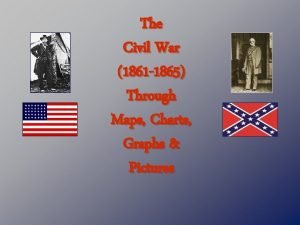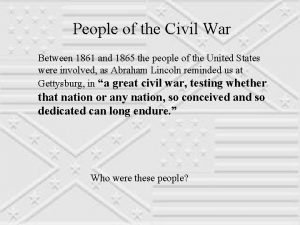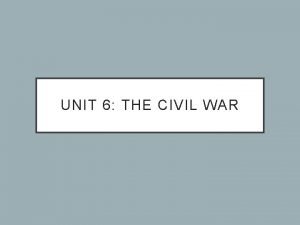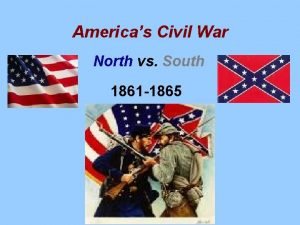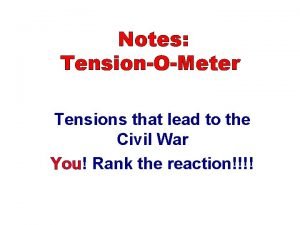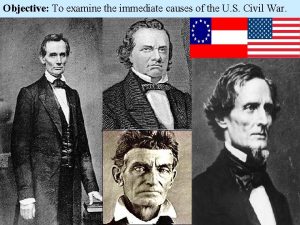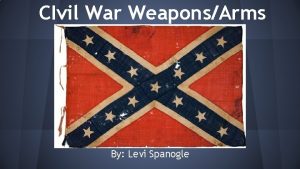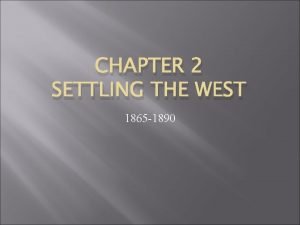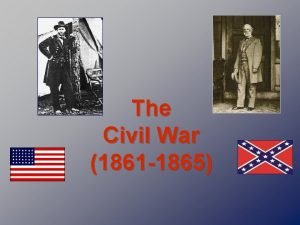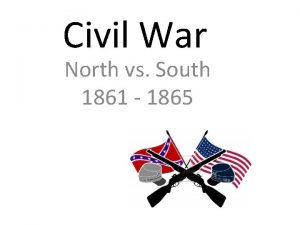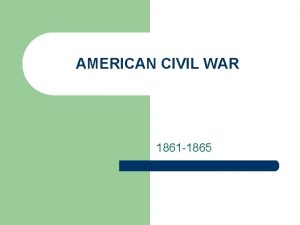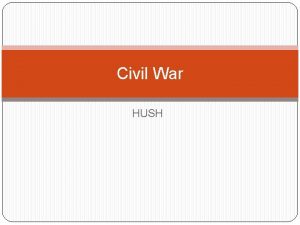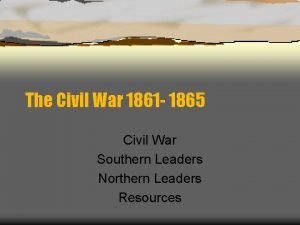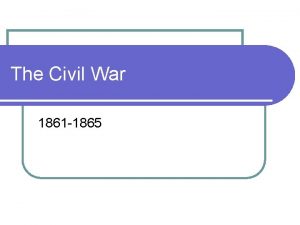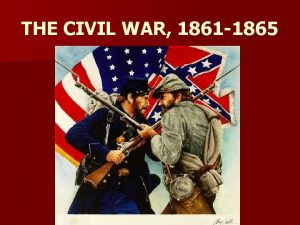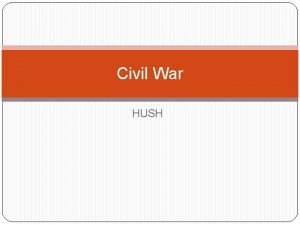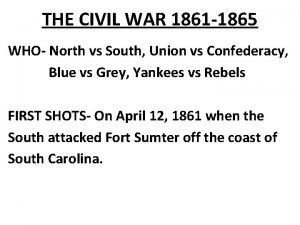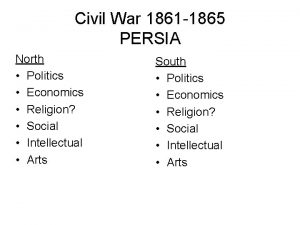CIVIL WAR 1861 1865 NORTH VS SOUTH 3






















- Slides: 22

CIVIL WAR 1861 -1865 NORTH VS. SOUTH

3. Civil War and Reconstruction a. Identify and analyze the technological, social, and strategic aspects of the Civil War b. Explain the influence of Abraham Lincoln’s philosophy of the Union and his executive actions and leadership on the course of the Civil War

Photography allowed the people to see how horrendous the war actually was in the USA.


Although many people died in the Civil War, many soldiers were horrifically injured. Their injuries forever altered their lives.



The Underground Railroad was a system in which many people helped slaves escape to freedom.

The Civil War Divided America

The Missouri Compromise said NEW states above 36’ 30’ would not have slavery and states under that line would be allowed to have slaves. This map has slave states marked in red.

The President of the United States of America, elected in 1860, was Abraham Lincoln.

Division Between North and South -Prior to the election of 1860, there was massive disunity in the USA. -The North was less dependent on slavery due to an industrial economy. -The South asserted they needed slavery due to having an agrarian economy dependent on harvesting crops.

Division leads to Secession -The South feared the federal government would attempt to overpower the state governments and eventually abolish slavery. -After Lincoln was elected, South Carolina was the first state to leave the union by seceding in December of 1860. -The other Southern states soon joined them and formed the Confederate States.

Modern Day USA

The Confederate States are marked in red. Border States, choosing to be neutral, are marked with lines.

The President of the Divided States -On March 4, 1861, Abraham Lincoln was sworn in as President. -Lincoln came at night to D. C. for the protection of his safety. He claimed there would be no conflict unless the South provoked the North to fight. - The President did not initially take office to destroy slavery. His abolitionist sentiment developed and evolved over time.

Why can’t the South just leave? -The national debt was jointly held by the states. If the South left, the North would be left with all the debt. - The South provided crops and other goods for the factories of the North. -The South made money off other nations by selling cotton. The North would lose this revenue for taxes and other economic purposes.

Union and Confederate Forces Clash -On April 12, 1861, South Carolina attempted to take Fort Sumter in Charleston. Yet, the North controlled this fort. The fighting started over this fortress. -The Northern Union had many advantages in the Civil War. They had more people (called the law of attrition), industrialization, and better railroads. -The Southern advantages included “home field advantage” in their region, skilled arms men, talented generals, and the profitable cash crop of cotton.

The Battle for Fort Sumter was NOT a dramatic start to the war. There were zero Union casualties and only one casualty for the Confederates.

And, one horse died as well. This was not dramatic start to the war…

The Northern Battle Plan -FIRST, the North wanted to blockade Southern ports to deprive the South of outside goods and profitable trade. - SECOND, the Union wanted to control the Mississippi River to “split the South” and control the trade and travel of the body of water. -THIRD, the North wanted to capture Richmond, VA, which was the capital of the Confederate States of America.

Depicted below is the so called “Anaconda Plan” to cut off the South by controlling the Mississippi River and the Southern Sea Ports.
 Civil war 1861/1862
Civil war 1861/1862 Civil war 1861/1862
Civil war 1861/1862 The cause of the civil war
The cause of the civil war North vs south civil war
North vs south civil war North and south states civil war
North and south states civil war Us north vs south
Us north vs south South carolina 1861
South carolina 1861 John brown poster
John brown poster Chapter 14 lesson 2 north and south
Chapter 14 lesson 2 north and south Why was the civil war the first modern war
Why was the civil war the first modern war Toward civil war lesson 3 secession and war
Toward civil war lesson 3 secession and war Chapter 20 girding for war the north and the south
Chapter 20 girding for war the north and the south Scotson v pegg
Scotson v pegg Features of indian council act 1861
Features of indian council act 1861 Unionistička stranka 1861
Unionistička stranka 1861 Springfield model 1861 rifle facts
Springfield model 1861 rifle facts Civil rights and civil liberties webquest
Civil rights and civil liberties webquest Settling the west 1865 to 1890
Settling the west 1865 to 1890 The rise of industrial america 1865-1900
The rise of industrial america 1865-1900 Becoming a world power 1865-1917
Becoming a world power 1865-1917 Gregor mendel 1865
Gregor mendel 1865 Regionalism literary movement
Regionalism literary movement Four features of industrial manufacturing (1865-1900)
Four features of industrial manufacturing (1865-1900)
